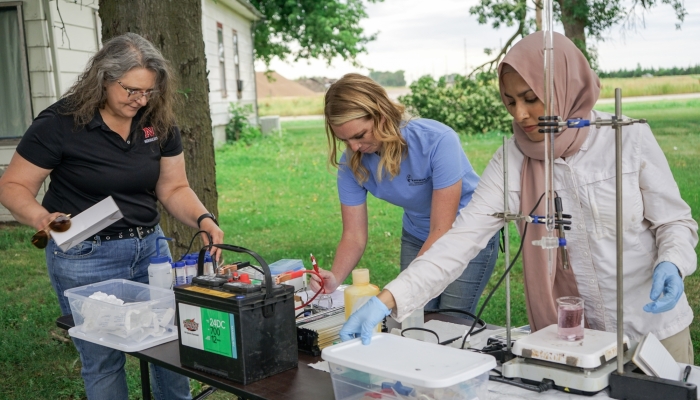Monitoring Uranium in Drinking Water in the NRD
By Erinn Wilkins, water resources technician
The Upper Big Blue NRD recently finished a five-year study that used our monitoring wells to look at arsenic, selenium, and uranium concentrations within the district. From this study, it was observed that these concentrations are increasing over time, as well as fluctuating seasonally. While none of the wells sampled hit the maximum contaminant level (MCL), it is still important to monitor and chart trends.
Other studies have examined the relationship between nitrate levels and uranium concentrations. These studies have shown that high levels of nitrates have been correlated to elevated uranium concentrations. Shallow groundwater was the most likely cause of co-contamination with nitrates and uranium. In fact, primary nitrate contamination can be a factor leading to secondary uranium contamination, as high levels of nitrate can help transport uranium from soil particles to the groundwater.
When uranium undergoes an oxidation reaction (a reaction where uranium loses electrons), nitrate gains the electrons through a reduction reaction, which will bond the two elements. This type of reaction is better known as a redox reaction. Nitrate can then easily move uranium from the soil into the groundwater.
As of late, uranium has been getting attention as an emerging contaminant to be on the lookout for. However, uranium has been in our groundwater for a long time. Uranium is a naturally occurring radioactive mineral present in certain types of rocks and soils. Uranium can also be introduced to groundwater through human activities, such as mining, nuclear power production, and the combustion from coal and other fuels.
Drinking water may naturally contain small amounts of uranium, but water that is high in uranium can present health effects over time. Some studies have suggested that long-term ingestion of water with high levels of uranium can lead to kidney damage and an increased risk of some cancers. Uranium in water cannot be detected by taste or smell. The only way to know if your water has uranium is to test it. Public wells are already monitoring for a variety of contaminants, including nitrate and uranium. However, private wells do not have regulations in place for testing or monitoring; it is up to the well owner to periodically test their well. Currently, the only lab in Nebraska that is certified to test for uranium is the DHHS Public Health Environmental Laboratory in Lincoln.
For treatment, a reverse osmosis system is the best option. Other options include distillation, special adsorbent media, and anion exchange. These can remove uranium and a variety of other contaminants found in groundwater. It should be noted that boiling water is not an effective way to remove uranium. Activated carbon filters, like Brita filters, cannot remove uranium and other contaminants, like nitrates.


